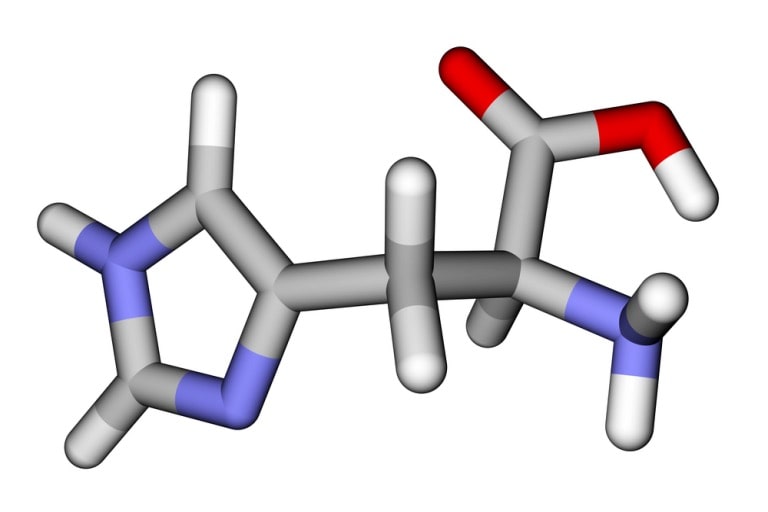ARA-290, a small peptide derived from erythropoietin (EPO), has emerged as a topic of interest within scientific research. This peptide, also known as helix B surface peptide (HBSP), may exhibit a range of characteristics distinct from its parent molecule, EPO.
Its potential mechanisms and implications in various physiological contexts have been a focal point of numerous scientific investigations.
ARA-290 Peptide: Molecular Structure and Mechanisms of Action
ARA-290 is an 11-amino acid peptide that retains the tertiary structure responsible for EPO’s tissue-protective properties while apparently lacking the erythropoietic activity associated with the parent hormone.
This distinction is deemed critical as it suggests that ARA-290 might confer protective impacts without influencing red blood cell production, thereby reducing the risk of thrombotic events typically associated with EPO.
Research indicates that ARA-290 may interact with the innate repair receptor (IRR), a heteromeric receptor formed by the combination of β common receptor (CD131) and erythropoietin receptor (EPOR).
This interaction might activate intracellular signaling pathways that promote tissue protection and repair. For instance, it has been hypothesized that ARA-290 might activate the Janus kinase 2 (JAK2) and signal transducer and activator of transcription 5 (STAT5) pathways, leading to anti-apoptotic and anti-inflammatory impacts.
ARA-290 Peptide: Inflammation
Recent investigations have focused on the anti-inflammatory properties of ARA-290. Theoretically, the peptide might modulate the inflammatory response by reducing the production of pro-inflammatory cytokines and increasing the levels of anti-inflammatory cytokines. This modulation may help mitigate tissue damage and promote healing in various inflammatory conditions.
For instance, in animal models of inflammatory diseases, ARA-290 has been reported to reduce the expression of tumor necrosis factor-alpha (TNF-α) and interleukin-1 beta (IL-1β) while simultaneously increasing the levels of interleukin-10 (IL-10).
Such changes in cytokine profiles suggest that ARA-290 might help to create a more balanced inflammatory response, potentially reducing the severity of inflammation and associated tissue damage.
ARA-290 Peptide: Neuroprotective Research
Another area where ARA-290 has been widely studied is within the field of neuroprotection. It has been hypothesized that the peptide might protect neurons from various forms of damage, including oxidative stress and excitotoxicity. The proposed mechanisms appear to involve the activation of survival pathways and the inhibition of pro-apoptotic signals within neuronal cells.
Experimental animal models of neurodegenerative diseases suggest that ARA-290 might reduce neuronal apoptosis and promote the survival of neurons under stress conditions.
Additionally, research indicates that the peptide might enhance the function of neural stem cells, potentially helping in the recovery and regeneration of damaged neural tissue. This has led to speculation about its potential implications in conditions such as multiple sclerosis, Alzheimer’s disease, and Parkinson’s disease.
ARA-290 Peptide: Pain
Findings imply that ARA-290 might also exhibit properties in modulating pain. Investigations purport that the peptide might influence pain pathways and reduce chronic pain in various conditions. The proposed mechanisms involve the modulation of nociceptive signaling and the reduction of inflammation, which are key factors in developing and maintaining chronic pain.
ARA-290 has been reported to reduce pain behaviors and improve overall function in animal models of neuropathic pain. It is theorized that the peptide might achieve these impacts by reducing the activation of glial cells and lowering the production of pro-inflammatory cytokines in the nervous system. These findings suggest that ARA-290 might be relevant for further study in the context of chronic pain conditions.
ARA-290 Peptide: Cardioprotective Research
The cardioprotective potential of ARA-290 has also been a subject of research interest. It has been hypothesized that the peptide might confer protection against myocardial ischemia-reperfusion injury. This condition occurs when the blood supply returns to the heart after ischemia or lack of oxygen. This condition often leads to significant tissue damage and inflammation.
Research indicates that ARA-290 might reduce the extent of myocardial injury by activating protective signaling pathways and reducing inflammation. For example, in models of myocardial ischemia-reperfusion injury, the peptide has been ascertained to reduce infarct size and improve cardiac function.
These impacts are believed to be mediated by activating the JAK2/STAT5 pathway and inhibiting inflammatory mediators.
ARA-290 Peptide: Diabetic Complications
It has been hypothesized that ARA-290 might also have potential implications in the context of diabetic complications in laboratory animals. Diabetes is often associated with chronic inflammation and tissue damage, leading to complications such as neuropathy, nephropathy, and retinopathy.
It is theorized that ARA-290 might mitigate some of these complications by exerting its anti-inflammatory and tissue-protective action. For instance, in models of diabetic neuropathy, ARA-290 has been reported to reduce nerve damage and improve nerve function.
The peptide might achieve these impacts by reducing oxidative stress and inflammation, thereby protecting nerve cells from damage. Similarly, in models of diabetic nephropathy, ARA-290 has been indicated to reduce markers of kidney damage and improve kidney function, suggesting potential characteristics that may act to preserve renal function in models of diabetic events.
ARA-290 Peptide: Conclusion
In conclusion, ARA-290 is a peptide with a range of unique characteristics that may have widespread physiological impacts beyond the erythropoietic action of its parent molecule, EPO. Its interaction with the innate repair receptor and subsequent activation of protective signaling pathways suggests it might confer tissue-protective, anti-inflammatory, neuroprotective, and cardioprotective action.
While the exact mechanisms of these outcomes are still being elucidated, the potential implications of ARA-290 in various inflammatory and degenerative conditions make it an intriguing subject for further research.
As our understanding of this peptide grows, it may open new avenues for developing novel approaches to reduce inflammation, protect tissues, and improve outcomes in various conditions. Visit Biotech Peptides for the highest quality and most affordable research compounds available on the market.
References
[i] van Velzen M, Heij L, Niesters M, Cerami A, Dunne A, Dahan A, Brines M. ARA 290 for treatment of small fiber neuropathy in sarcoidosis. Expert Opin Investig Drugs. 2014 Apr;23(4):541-50. doi: 10.1517/13543784.2014.892072. Epub 2014 Feb 21. PMID: 24555851.
[ii] Zhang W, Yu G, Zhang M. ARA 290 relieves pathophysiological pain by targeting TRPV1 channel: Integration between immune system and nociception. Peptides. 2016 Feb;76:73-9. doi: 10.1016/j.peptides.2016.01.003. Epub 2016 Jan 13. PMID: 26774587.
[iii] Al-Onaizi MA, Thériault P, Lecordier S, Prefontaine P, Rivest S, ElAli A. Early monocyte modulation by the non-erythropoietic peptide ARA 290 decelerates AD-like pathology progression. Brain Behav Immun. 2022 Jan;99:363-382. doi: 10.1016/j.bbi.2021.07.016. Epub 2021 Jul 31. PMID: 34343617.
[iv] Mohtavinejad N, Hajiramezanali M, Akhlaghi M, Bitarafan-Rajabi A, Gholipour N. Synthesis and evaluation of 99mTc-DOTA-ARA-290 as potential SPECT tracer for targeting cardiac ischemic region. Iran J Basic Med Sci. 2021 Nov;24(11):1488-1499. doi: 10.22038/IJBMS.2021.57565.12799. PMID: 35317117; PMCID: PMC8917853.
[v] Dahan A, Dunne A, Swartjes M, Proto PL, Heij L, Vogels O, van Velzen M, Sarton E, Niesters M, Tannemaat MR, Cerami A, Brines M. ARA 290 improves symptoms in patients with sarcoidosis-associated small nerve fiber loss and increases corneal nerve fiber density. Mol Med. 2013 Nov 8;19(1):334-45. doi: 10.2119/molmed.2013.00122. Erratum in: Mol Med. 2016 Oct 20;22:674. doi: 10.2119/molmed.2013.00122.erratum. PMID: 24136731; PMCID: PMC3883966.








